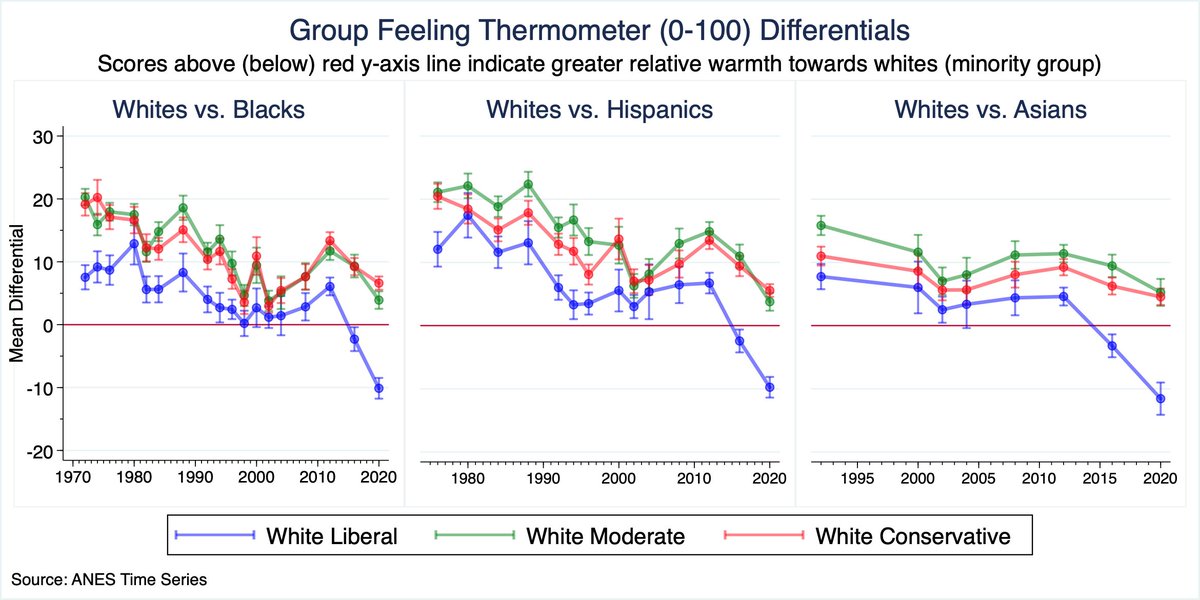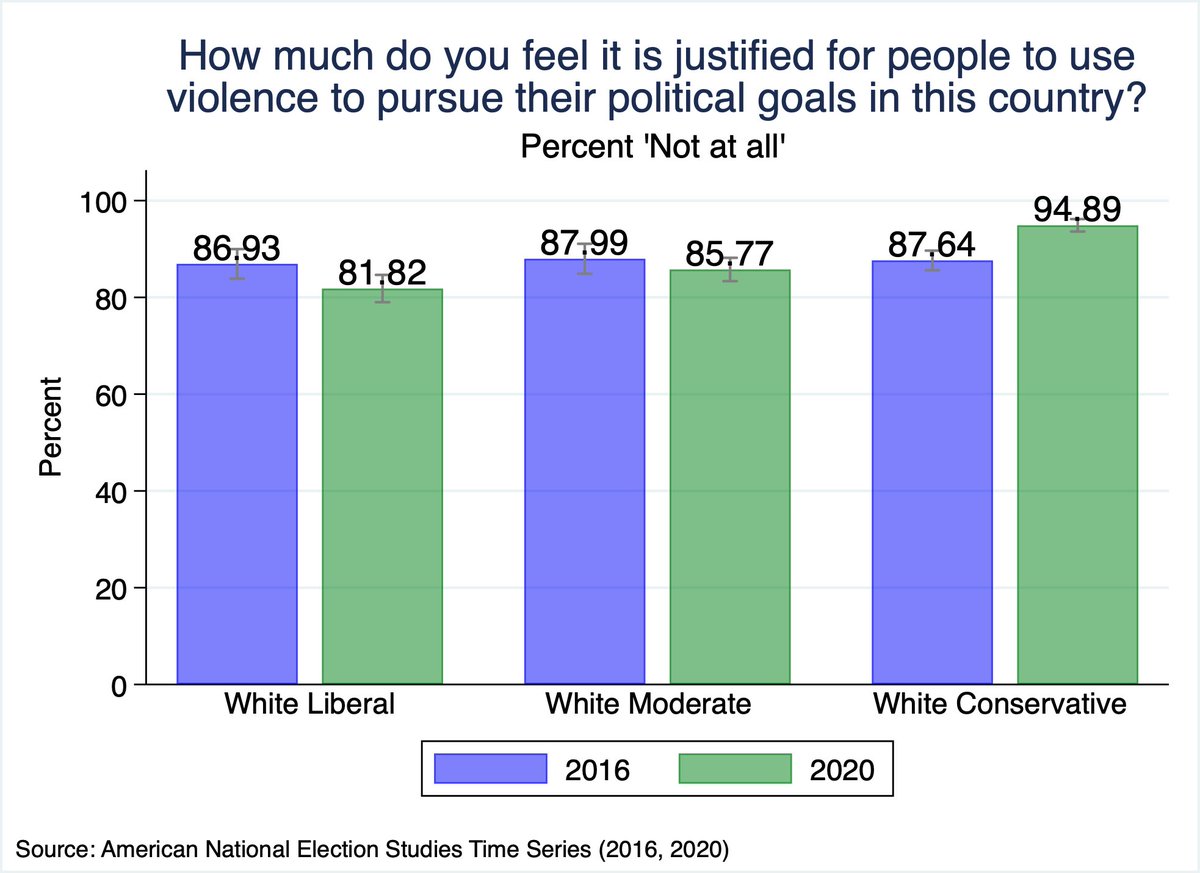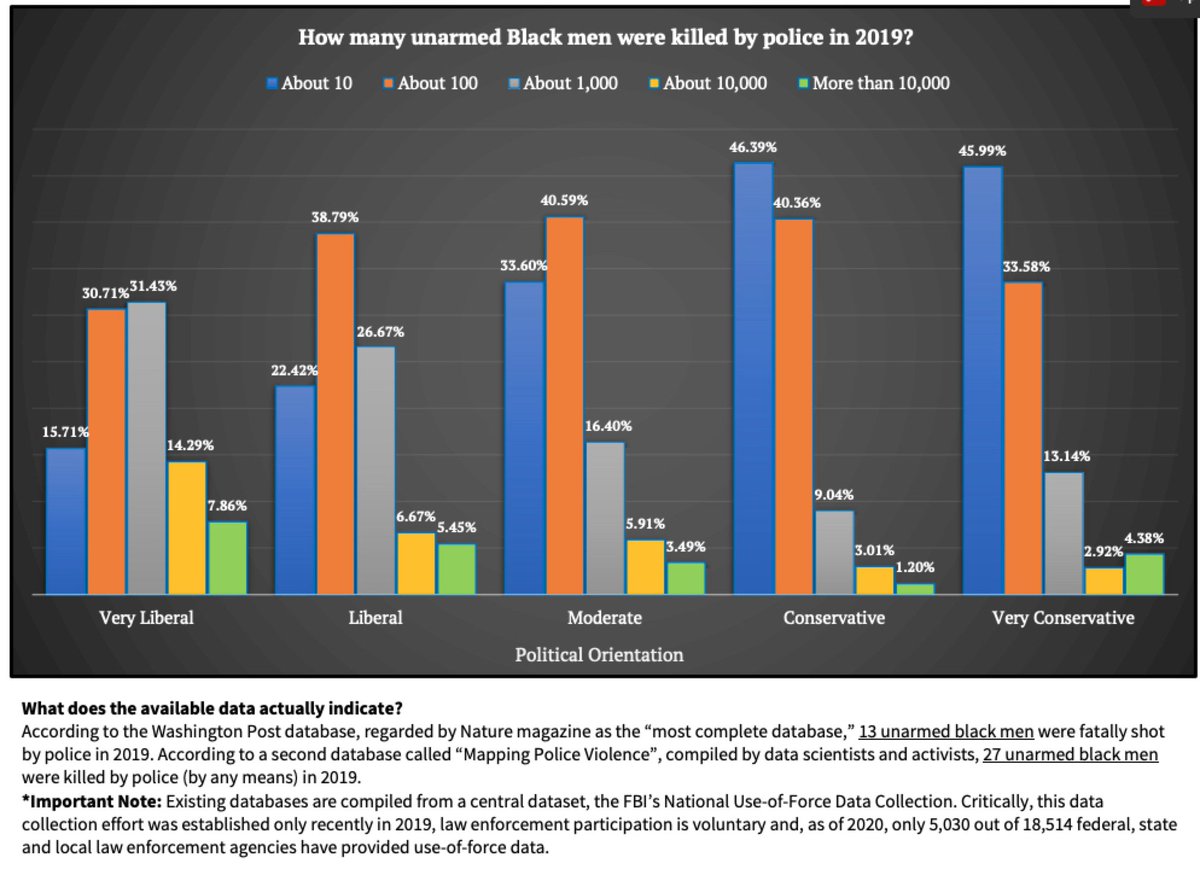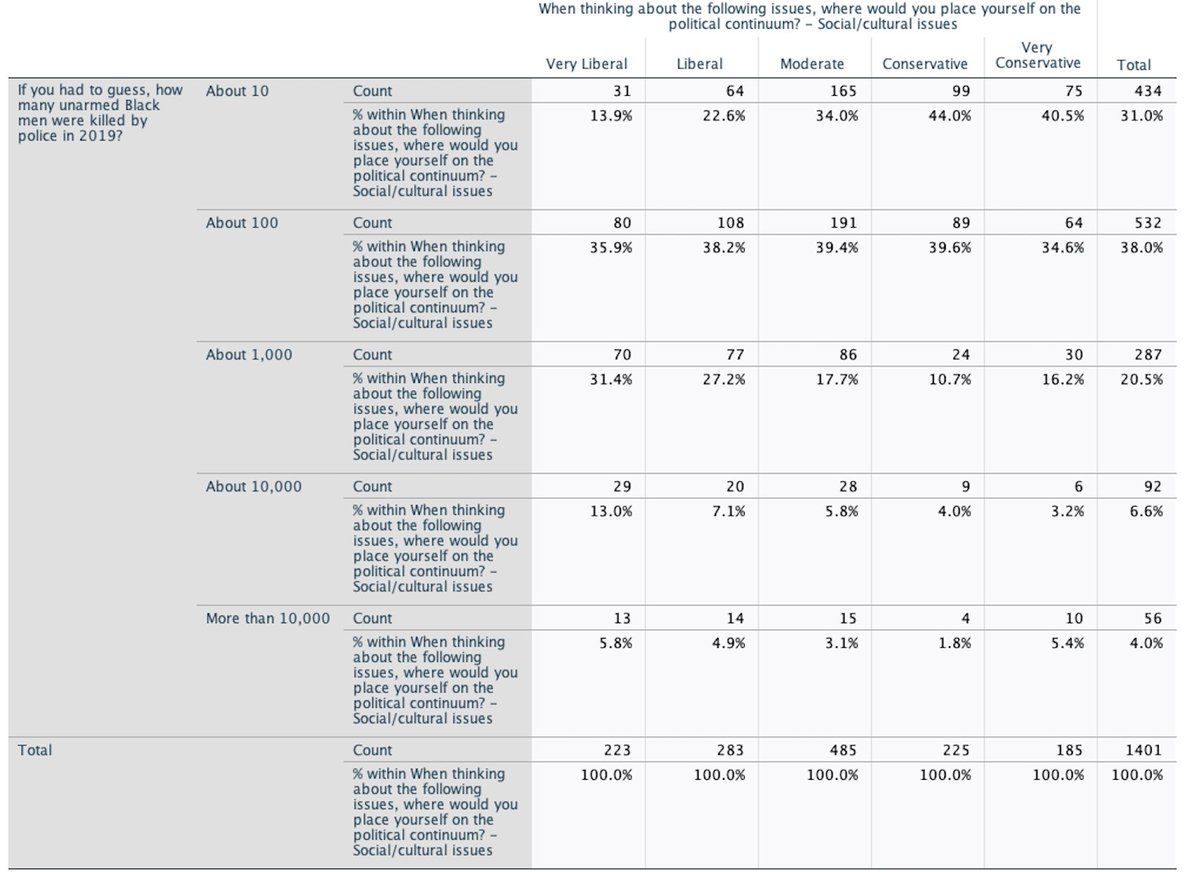
@glukianoff @JonHaidt The Pew panel survey included the negative mental health symptoms battery in a subsequent wave (1 month later). Here were the results
https://twitter.com/ZachG932/status/1264672315838693378?s=20
@glukianoff @JonHaidt Same battery was also included in the ANES 2020 pilot survey
https://twitter.com/ZachG932/status/1288978160743264257?s=20
@glukianoff @JonHaidt The latest ANES Time Series survey included only 2 mental health items (restlessness, trouble concentrating), but the substantive pattern is replicated notwithstanding. I will graph the results and share.
@glukianoff @JonHaidt As promised, here are the mean responses to the two items by ideology. White vs. non-white differences were insignificant here, so I didn't bother to graph them. 

@glukianoff @JonHaidt I also averaged the two items and z-scored the index. Here are the results by ideology x sex. 

@glukianoff @JonHaidt I'll need to conduct a more rigorous analysis when I have more time, but the differences are large enough that I suspect they'll survive any controls.
@glukianoff @JonHaidt This may also interest you
https://twitter.com/ZachG932/status/1308493394419822596?s=20
• • •
Missing some Tweet in this thread? You can try to
force a refresh















